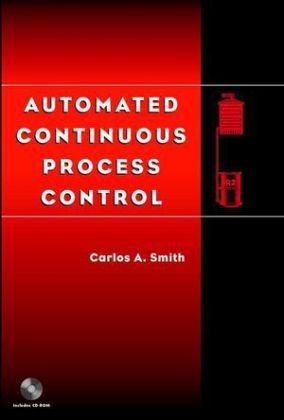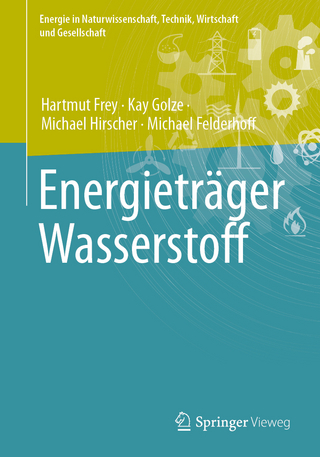
Automated Continuous Process Control
Wiley-Interscience (Verlag)
978-0-471-21578-3 (ISBN)
Automated Continuous Process Control pulls together–in one compact and practical volume–the essentials for understanding, designing, and operating process control systems. This comprehensive guide covers the major elements of process control in a well-defined and ordered framework. Concepts are clearly presented, with minimal reliance on mathematical equations and strong emphasis on practical, real-life examples. Beginning with the very basics of process control, Automated Continuous Process Control builds upon each chapter to help the reader understand and efficiently practice industrial process control. This complete presentation includes:
A discussion of processes from a physical point of view
Feedback controllers and the workhorse in the industry–the PID controller
The concept and implementation of cascade control
Ratio, override (or constraint), and selective control
Block diagrams and stability
Feedforward control
Techniques to control processes with long dead times
Multivariable process control
Applicable for electrical, industrial, chemical, or mechanical engineers, Automated Continuous Process Control offers proven process control guidance that can actually be used in day-to-day operations. The reader will also benefit from the companion CD-ROM, which contains processes that have been successfully used for many years to practice tuning feedback and cascade controllers, as well as designing feedforward controllers.
CARLOS A. SMITH is Professor of Chemical Engineering and Associate Dean of Academics in the College of Engineering, University of South Florida, Tampa. He not only teaches students but also teaches numerous short courses on process control to professionals. He is the coauthor of the bestselling textbook Principles of Automatic Process Control (Wiley).
Preface xi
1 Introduction 1
1-1 Process Control System 1
1-2 Important Terms and Objective of Automatic Process Control 3
1-3 Regulatory and Servo Control 4
1-4 Transmission Signals, Control Systems, and Other Terms 5
1-5 Control Strategies 6
1-5.1 Feedback Control 6
1-5.2 Feedforward Control 8
1-6 Summary 9
2 Process Characteristics 11
2-1 Process and Importance of Process Characteristics 11
2-2 Types of Processes 13
2-3 Self-Regulating Processes 14
2-3.1 Single-Capacitance Processes 14
2-3.2 Multicapacitance Processes 24
2-4 Transmitters and Other Accessories 28
2-5 Obtaining Process Characteristics from Process Data 29
2-6 Questions When Performing Process Testing 32
2-7 Summary 33
Reference 33
Problems 34
3 Feedback Controllers 38
3-1 Action of Controllers 38
3-2 Types of Feedback Controllers 40
3-2.1 Proportional Controller 40
3-2.2 Proportional–Integral Controller 44
3-2.3 Proportional–Integral–Derivative Controller 48
3-2.4 Proportional–Derivative Controller 50
3-3 Reset Windup 50
3-4 Tuning Feedback Controllers 53
3-4.1 Online Tuning: Ziegler–Nichols Technique 53
3-4.2 Offline Tuning 54
3-5 Summary 60
References 60
Problems 60
4 Cascade Control 61
4-1 Process Example 61
4-2 Implementation and Tuning of Controllers 65
4-2.1 Two-Level Cascade Systems 65
4-2.2 Three-Level Cascade Systems 68
4-3 Other Process Examples 69
4-4 Closing Comments 72
4-5 Summary 73
References 73
5 Ratio, Override, and Selective Control 74
5-1 Signals and Computing Algorithms 74
5-1.1 Signals 74
5-1.2 Programming 75
5-1.3 Scaling Computing Algorithms 76
5-1.4 Significance of Signals 79
5-2 Ratio Control 80
5-3 Override, or Constraint, Control 88
5-4 Selective Control 92
5-5 Designing Control Systems 95
5-6 Summary 110
References 111
Problems 112
6 Block Diagrams and Stability 127
6-1 Block Diagrams 127
6-2 Control Loop Stability 132
6-2.1 Effect of Gains 137
6-2.2 Effect of Time Constants 138
6-2.3 Effect of Dead Time 138
6-2.4 Effect of Integral Action in the Controller 139
6-2.5 Effect of Derivative Action in the Controller 140
6-3 Summary 141
Reference 141
7 Feedforward Control 142
7-1 Feedforward Concept 142
7-2 Block Diagram Design of Linear Feedforward Controllers 145
7-3 Lead/Lag Term 155
7-4 Extension of Linear Feedforward Controller Design 156
7-5 Design of Nonlinear Feedforward Controllers from Basic Process Principles 161
7-6 Closing Comments on Feedforward Controller Design 165
7-7 Additional Design Examples 167
7-8 Summary 172
References 173
Problem 173
8 Dead-time Compensation 174
8-1 Smith Predictor Dead-Time Compensation Technique 174
8-2 Dahlin Controller 176
8-3 Summary 179
References 179
9 Multivariable Process Control 180
9-1 Pairing Controlled and Manipulated Variables 181
9-1.1 Obtaining Process Gains and Relative Gains 186
9-1.2 Positive and Negative Interactions 189
9-2 Interaction and Stability 191
9-3 Tuning Feedback Controllers for Interacting Systems 192
9-4 Decoupling 194
9-4.1 Decoupler Design from Block Diagrams 194
9-4.2 Decoupler Design from Basic Principles 196
9-5 Summary 197
References 197
Problem 198
Appendix A Case Studies 199
Case 1: Ammonium Nitrate Prilling Plant Control System 199
Case 2: Natural Gas Dehydration Control System 200
Case 3: Sodium Hypochlorite Bleach Preparation Control System 201
Case 4: Control System in the Sugar Refining Process 202
Case 5: Sulfuric Acid Process 204
Case 6: Fatty Acid Process 205
Reference 207
Appendix B Processes For Design Practice 208
Installing the Programs 208
Process 1: NH 3 Scrubber 208
Process 2: Catalyst Regenerator 211
Process 3: Mixing Process 213
Index 215
| Erscheint lt. Verlag | 14.3.2002 |
|---|---|
| Sprache | englisch |
| Maße | 185 x 264 mm |
| Gewicht | 590 g |
| Einbandart | gebunden |
| Themenwelt | Naturwissenschaften ► Chemie ► Technische Chemie |
| Technik ► Elektrotechnik / Energietechnik | |
| ISBN-10 | 0-471-21578-3 / 0471215783 |
| ISBN-13 | 978-0-471-21578-3 / 9780471215783 |
| Zustand | Neuware |
| Informationen gemäß Produktsicherheitsverordnung (GPSR) | |
| Haben Sie eine Frage zum Produkt? |
aus dem Bereich


